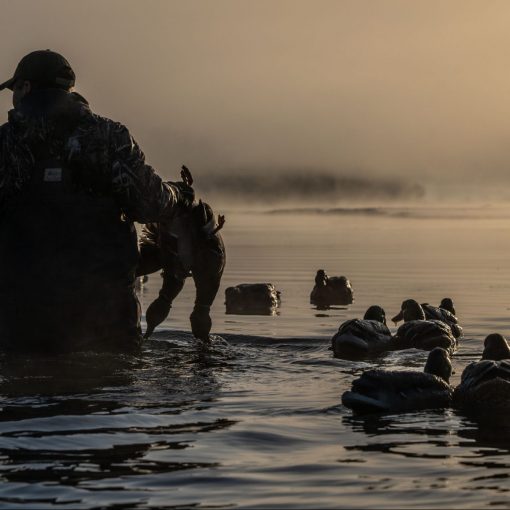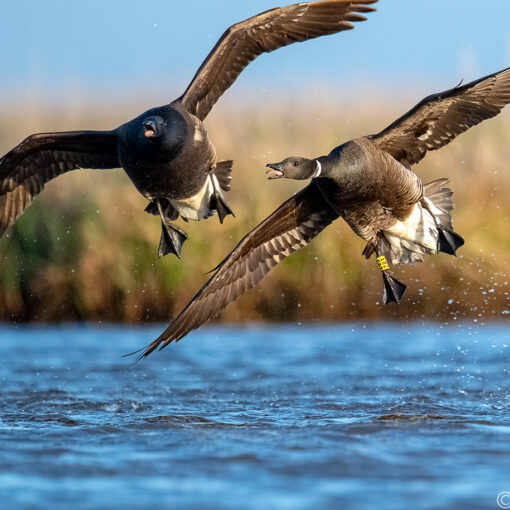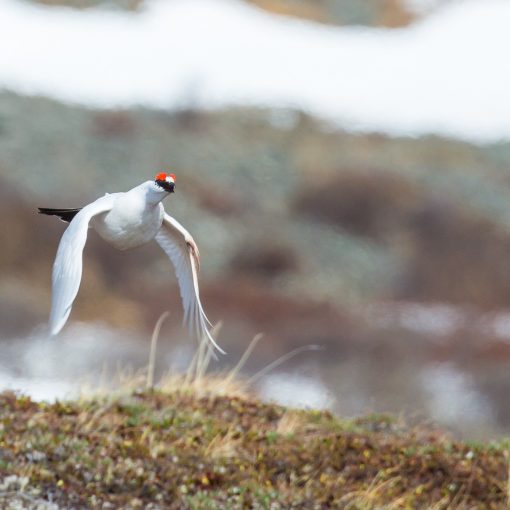Podcast: Play in new window | Download
Subscribe: Apple Podcasts | RSS
Overview
In this episode (Part 1 of 2) of Hunting Science, I talk with with Jim Sedinger and Dave Koons about harvest management with a focus on waterfowl harvest management. Jim Sedinger (ag.unr.edu/sedinger/Default.aspx) is a recently retired professor of Wildlife Ecology who spent his career studying the life history and ecology of vertebrates, mostly birds. Jim led the Black Brant research project on the Yukon Delta of Alaska, where we conduct the interview, 1984-2018. Dave Koons (davidkoons.webs.com ) is currently an Associate Professor and holds the James C. Kennedy Endowed Chair of Wetland and Waterfowl Conservation at Colorado State University. Both Jim and Dave are leading authorities on population dynamics and harvest management. We are conducting the interview in a Weatherport, a quonset hut structure with a synthetic cover that is flapping in the background on a very windy day.
Photo caption: A large flock of mostly snow geese stage during the fall in NW Montana.
Show Note
0:30 – Introduction and Background.
5:00 – We discuss the concepts of density dependence and maximum sustainable yield.
13:55 – Jim describes the ideas of compensation and additivity.
19:45 – Dave introduces how heterogeneity (variation) in quality of individuals in a population may affect harvest dynamics.
38:00 – Dave mistakenly refers to horns as antlers; he wanted me to make sure you knew he was aware of the difference.
44:20 – We transition to a discussion of adaptive harvest management.
51:00 – We start a discussion of how adaptive harvest management (AHM) is used to manage mallards in the mid-continent, which leads to a detailed discussion of the effectiveness of AHM.
Additional Resources for Episodes 3 and 4
- Maximum Sustainable Yield
- My lecture notes on Additive and Compensatory Mortality
- US Fish and Wildlife Service Adaptive Harvest Management
- This is a scientific article that Jim and I wrote on the effects of individual heterogeneity on harvest dynamics of Black Brant:
- Management strategies for over-abundant Snow Geese





